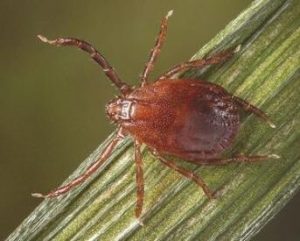Tiny tick bite can lead to months of health troubles
May 27th, 2024 by Ric Hanson
(Radio Iowa) – Memorial Day weekend is the unofficial start of summer, and an expert says Iowans who’ve been spending any time enjoying the outdoors need to be on-guard for ticks. Dr. Greg DeMuri, an infectious disease physician, says you can cut your chances of catching Lyme disease by taking a few simple precautions anytime you’re heading into the woods for a hike. “Looks a little nerdy, but if you put a rubber band at the base of your pant legs to keep the ticks from crawling up, that’s number one,” DeMuri says. “Number two, doing tick checks after you’re done.” There is also a wide variety of tick repellents on the market which can be highly effective at keeping the pests away.
“Ticks are out with a vengeance. Some of the immature forms of the tick, the nymphs, are out and the ticks are reproducing right now,” DeMuri says. “Those forms of tick can highly transmit Lyme disease, they’re smaller and more difficult to see. So this is, unfortunately, a very high risk time for acquiring Lyme disease.” If you find and remove a tick from yourself or someone else, pay attention to its coloring before you dispose of it. A deer tick’s lower back is red in color, while a wood tick has a black lower back section. “If you can identify whether it’s a deer tick versus a wood tick, it’s important to distinguish the two,” DeMuri says. “If you have a wood tick, there’s no risk of Lyme disease. If it’s a deer tick and it’s been attached for 72 hours or more, then you should contact your doctor. You might want to take a preventative antibiotic.”

Asian longhorn tick (ISU Extension photo)
Scientists say our planet is gradually warming and DeMuri says climate change may be contributing to the number ticks in Iowa and across the region. “When we don’t get those really, really deep freezes, that are below 20-below, the ticks can survive more,” he says, “but more importantly, their hosts can survive.” If you do get infected, Lyme disease can typically be cured with a course of antibiotics that runs two to four weeks, though some patients may have symptoms six months later. Those symptoms can include things like pain, fatigue and difficulty concentrating.





